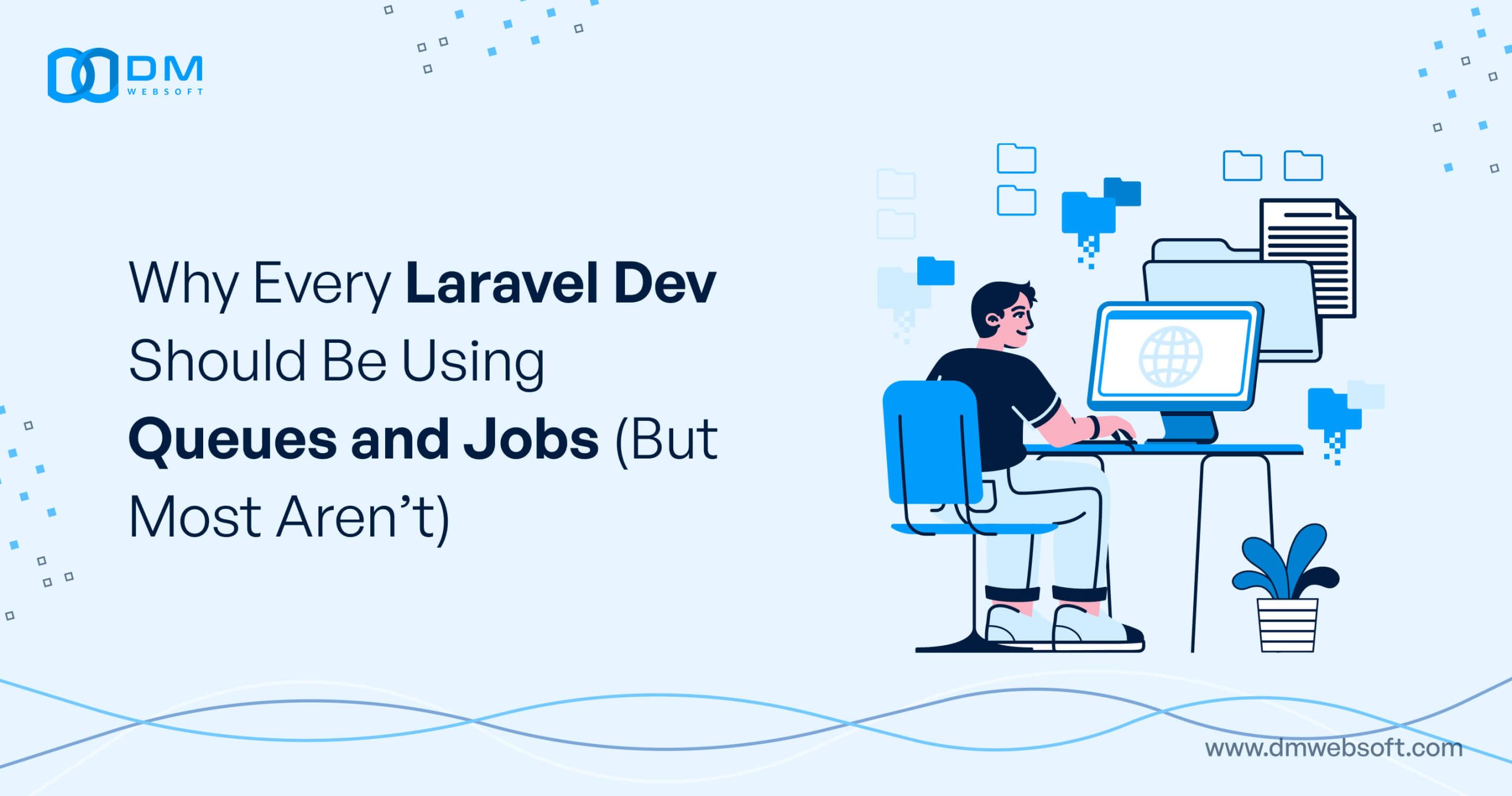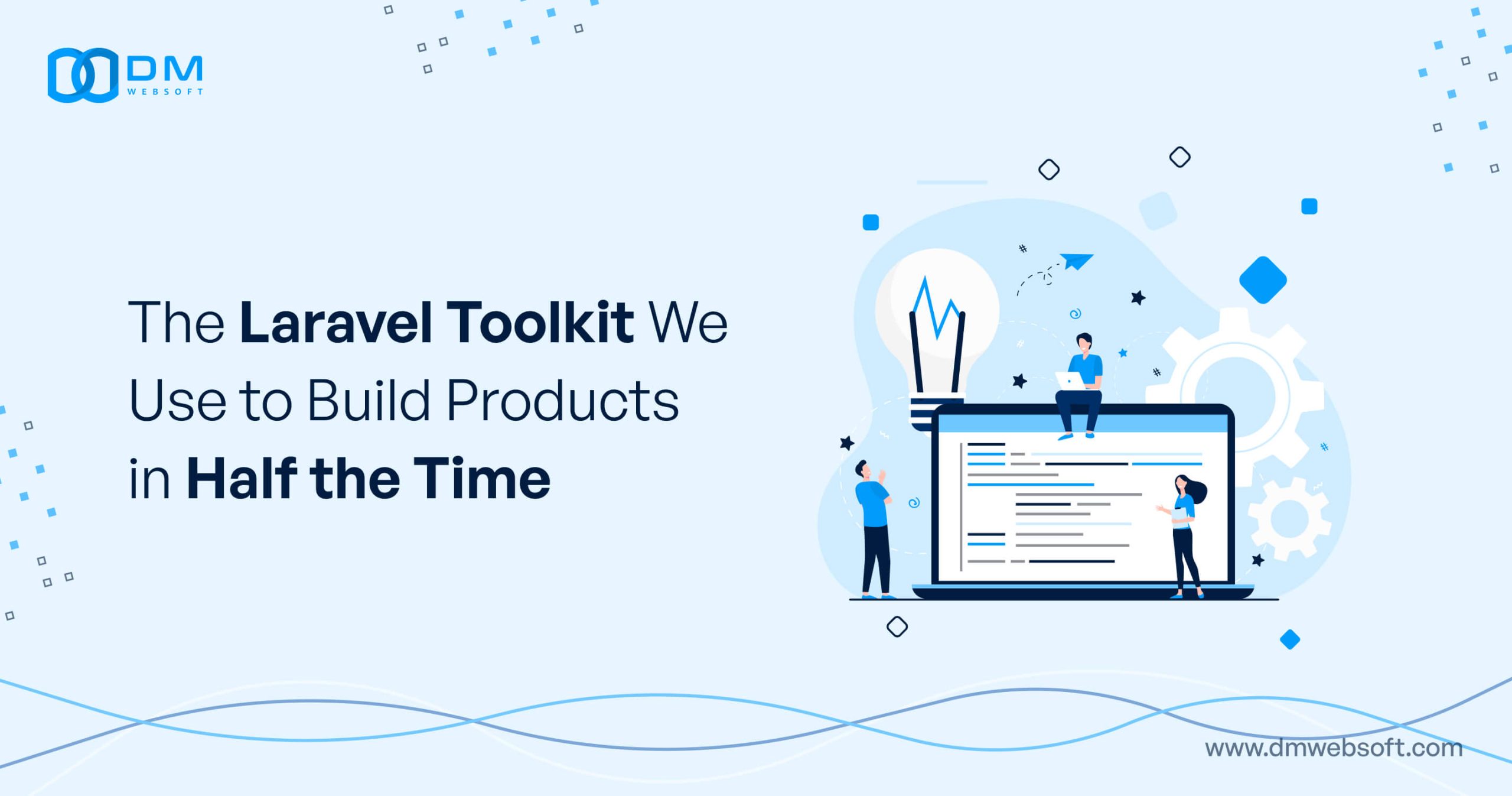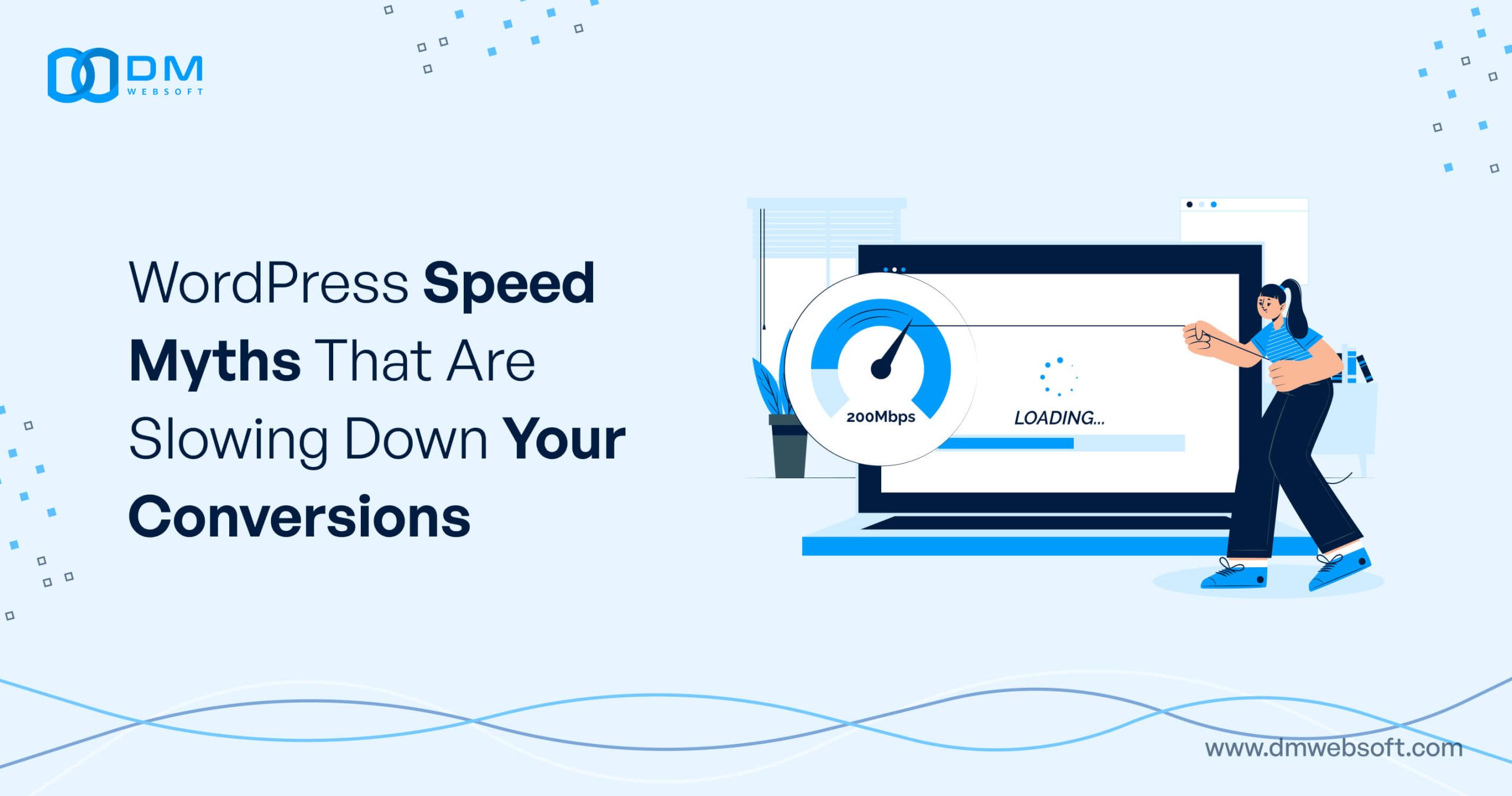DM WebSoft LLP exceeded our expectations! Their seasoned team of experts delivered a website that perfectly captures our brand essence. Their 15+ years of experience truly shine through in their exceptional web development skills.
Exploring Headless CMS: Benefits and Implementation Strategies
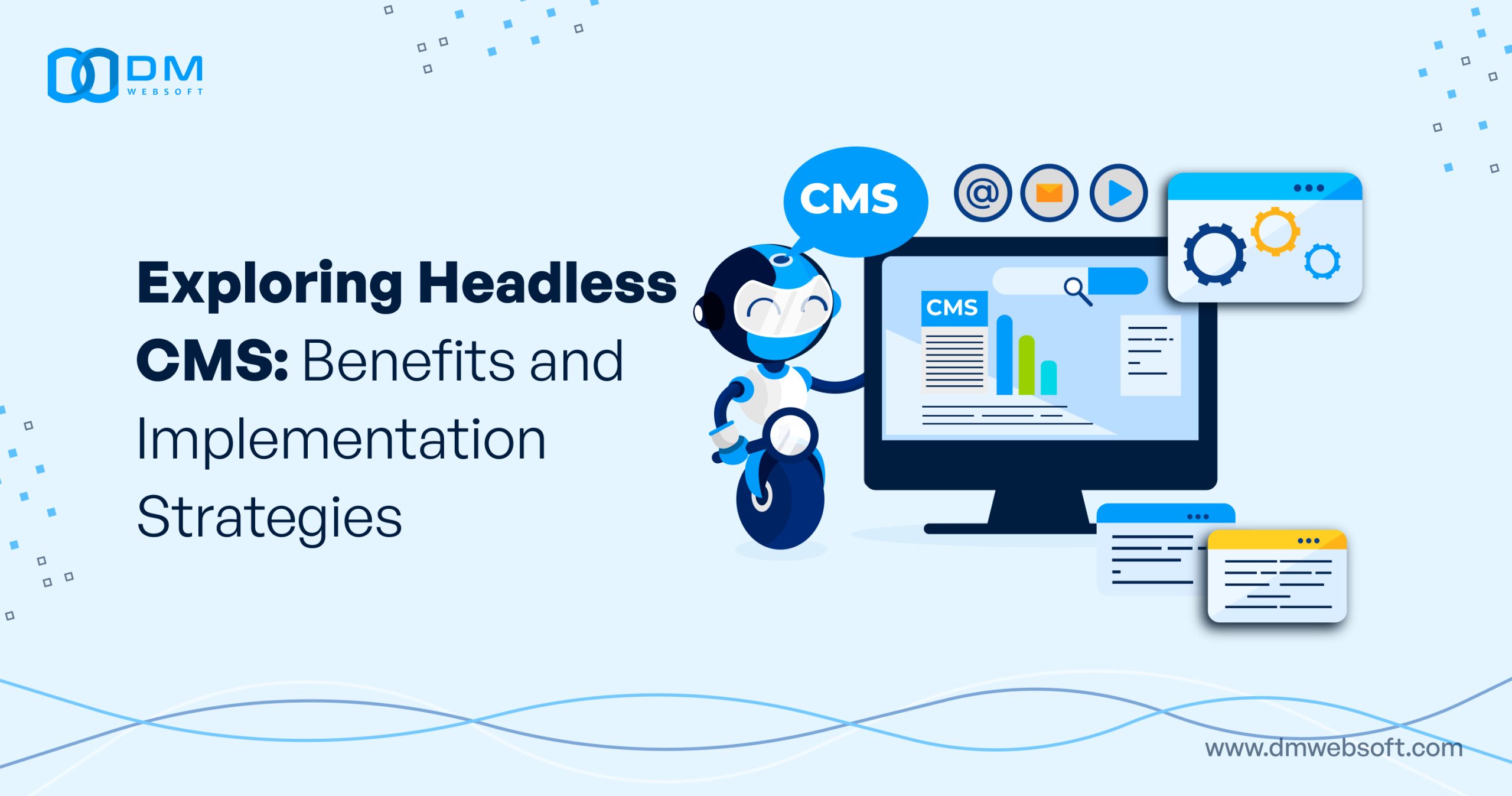
TABLE OF CONTENT
Introduction
What is a Headless CMS?
Headless CMS vs Traditional CMS
Key Benefits of Using a Headless CMS
Is a Headless CMS Right for Your Business?
Headless CMS Implementation Strategies
Headless CMS Adoption Client Success Story: The Real World
Market Trends and Headless CMS Research
A Preview of Headless CMS: What to Expect
Conclusion: Adopt Headless CMS for Your Corporate Site
Get in Touch
Introduction
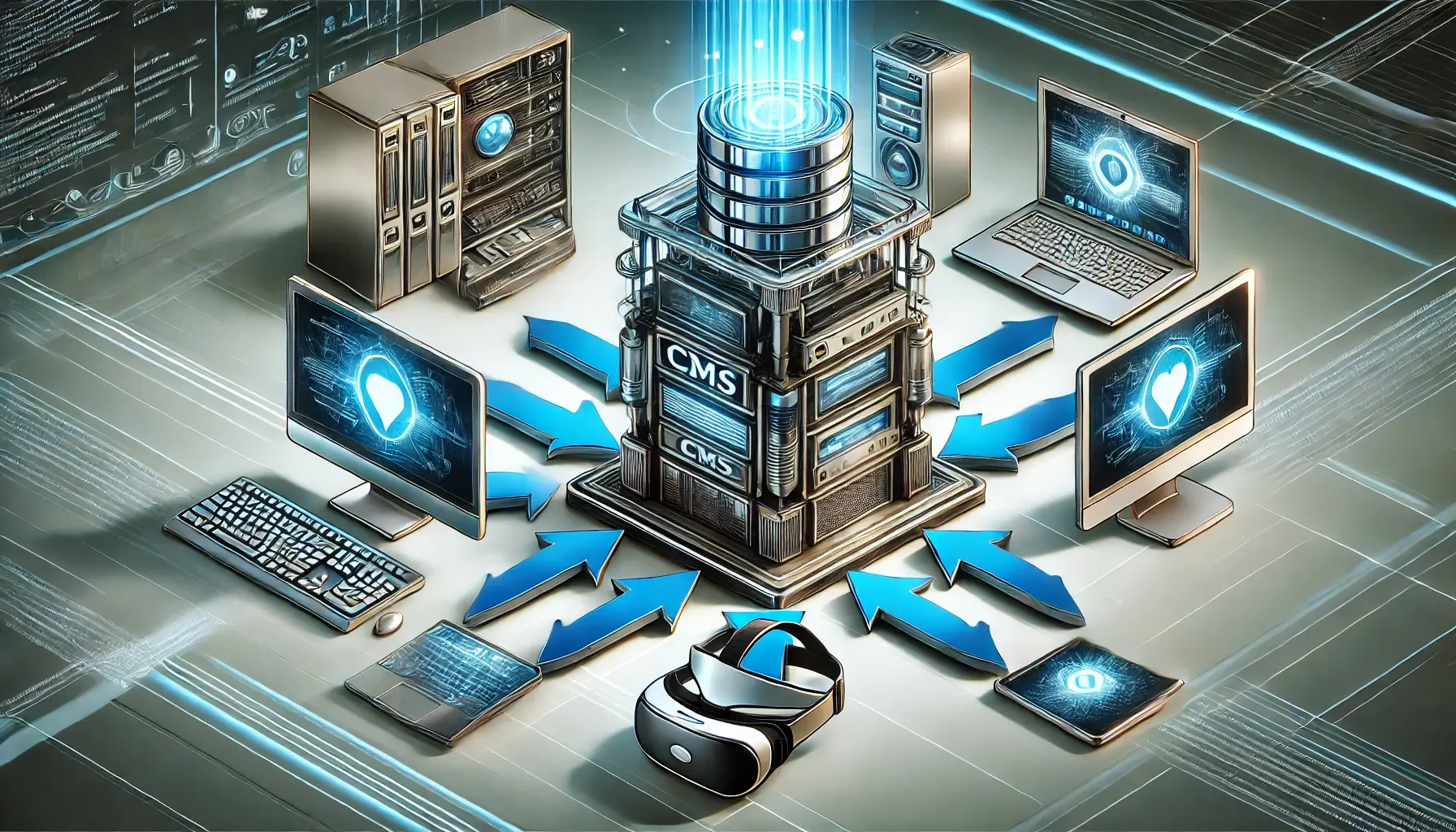
In a fast-evolving, digital-driven world, the manner in which business content is managed and delivered has gained prominence over anything else. The traditional content management system has served well for many years, but the present demand for omnichannel experiences and quick, flexible content delivery drives most companies to find these traditional systems increasingly restrictive. This is where Headless CMS comes into play.
A Headless CMS is a modern content management approach that decouples the content repository (the body) from the presentation layer (the head). Unlike other traditional forms of CMS, where content and the front end are tied together, a Headless CMS provides organizations with complete freedom of choice for front-end technology to make sure they serve content on any channel—a website, a mobile app, IoT, or even virtual reality. This is the big advantage of Headless CMS: unimaginable flexibility and scalability. It is an ideal solution for businesses that want to stay ahead in the extremely competitive digital space.
But what does really make Headless CMS a game changer? At DM WebSoft LLP, we’ve seen firsthand how our clients have used Headless CMS to revolutionize their content strategies. Not only do Headless CMS solutions streamline content management, but they also bring along improved performance and security, leading to a more engaging experience for users. Whether one is operating a small business that is striving for scale or a large enterprise that needs to manage content across multiple platforms, Headless CMS can help to be agile and efficient for success.
As we move along in this blog, we will unleash the major benefits of using Headless CMS, compare it with traditional CMS, and help you with practical implementation strategies. Whether you’re just starting to contemplate the realization of a headless CMS or have made your mind up and are ready to plunge ahead, our insights are going to lead you through that process in such a way that you’ll be able to make an informed decision in line with your business goals.
At DM WebSoft LLP, we are a team of developers who provide solutions that are always tailor-fit to our clients. With extensive experience in implementing Headless CMS, we help you make your way through the maze of complexity for smooth and successful integration into the digital ecosystem.
What is a Headless CMS?
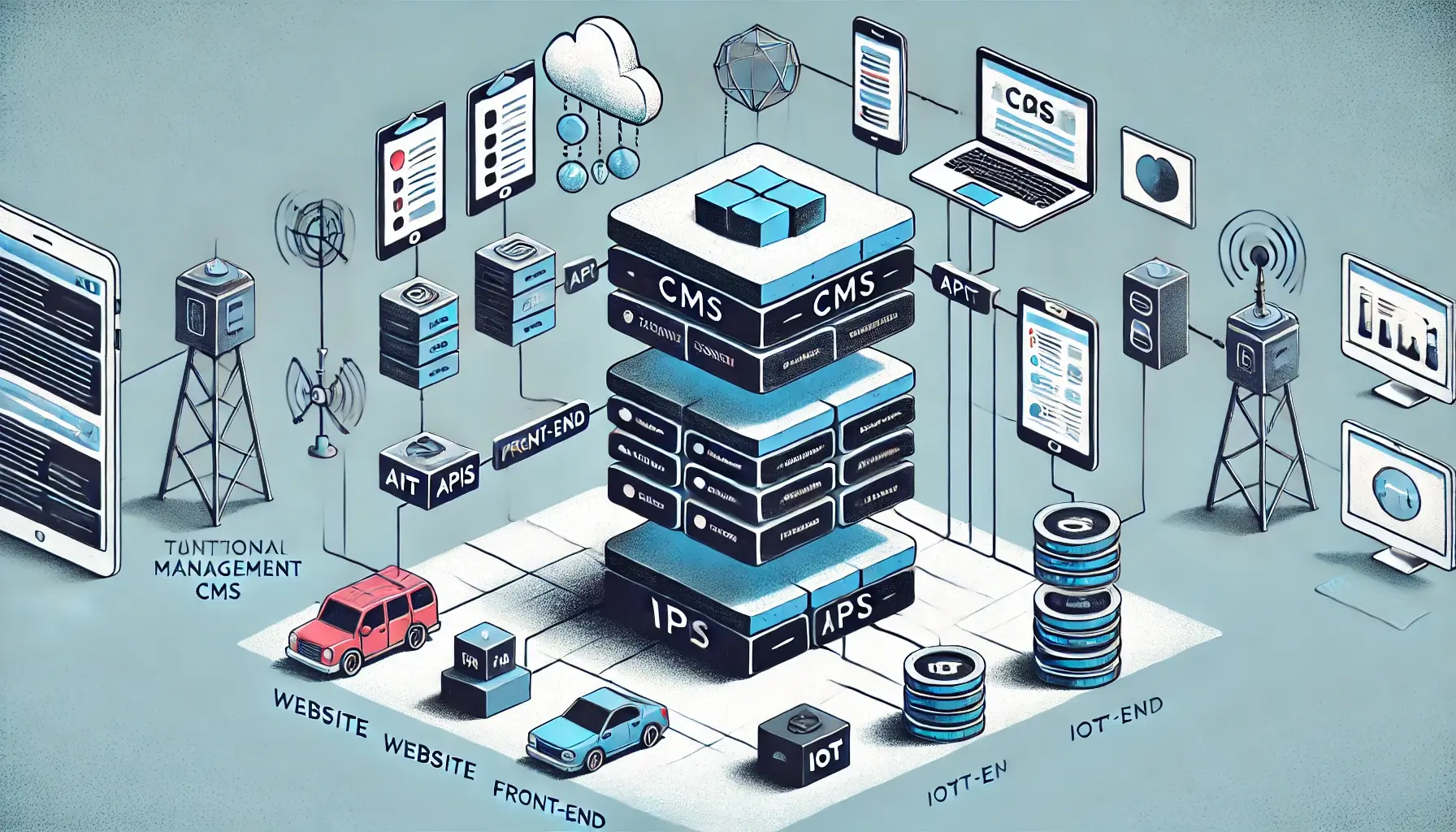
In its quest to push the limits of digital experiences, the business world started realizing that traditional content management systems needed to be much more flexible and scalable. Welcome the Headless CMS, the new approach to managing content that people are adopting at a fast pace. But what exactly is a Headless CMS, and how does it differ from the traditional systems that we’ve used and trusted for years?
At its core, a Headless CMS is a content management system that goes without a head. Traditional CMS setups couple the front and the back tightly, such that changes made to the content (back-end) are directly linked to how it will be presented (front-end). That can be limiting, especially in today’s multi-device world, where businesses need to deliver content on web platforms, mobile apps, smart devices, and more. A Headless CMS can solve such issues by separating the content repository from the presentation layer.
It allows such decoupling so that contents may be controlled centrally and distributed over APIs to any frontend framework or device. A headless CMS gives a developer the flexibility to develop just about any application without being bogged down by functionalities of the CMS. This flexibility is one of the primary reasons businesses increasingly turn toward headless CMS solutions.
DM WebSoft LLP has spearheaded this change, helping businesses build innovative and growth-driven Headless CMS architectures. When you choose a Headless CMS, you are in reality investing not in a content management system, but in an evergreen solution that adapts to the dynamics of any change taking place in a digital environment. We, here at DM WebSoft LLP, specialize in guiding businesses through this transition and making sure that the Headless CMS you select fits perfectly into your unique needs and goals.
Next, we will be looking at reasons to make a switch to Headless CMS on your behalf and how it is faring in comparison with traditional CMS.
Headless CMS vs Traditional CMS
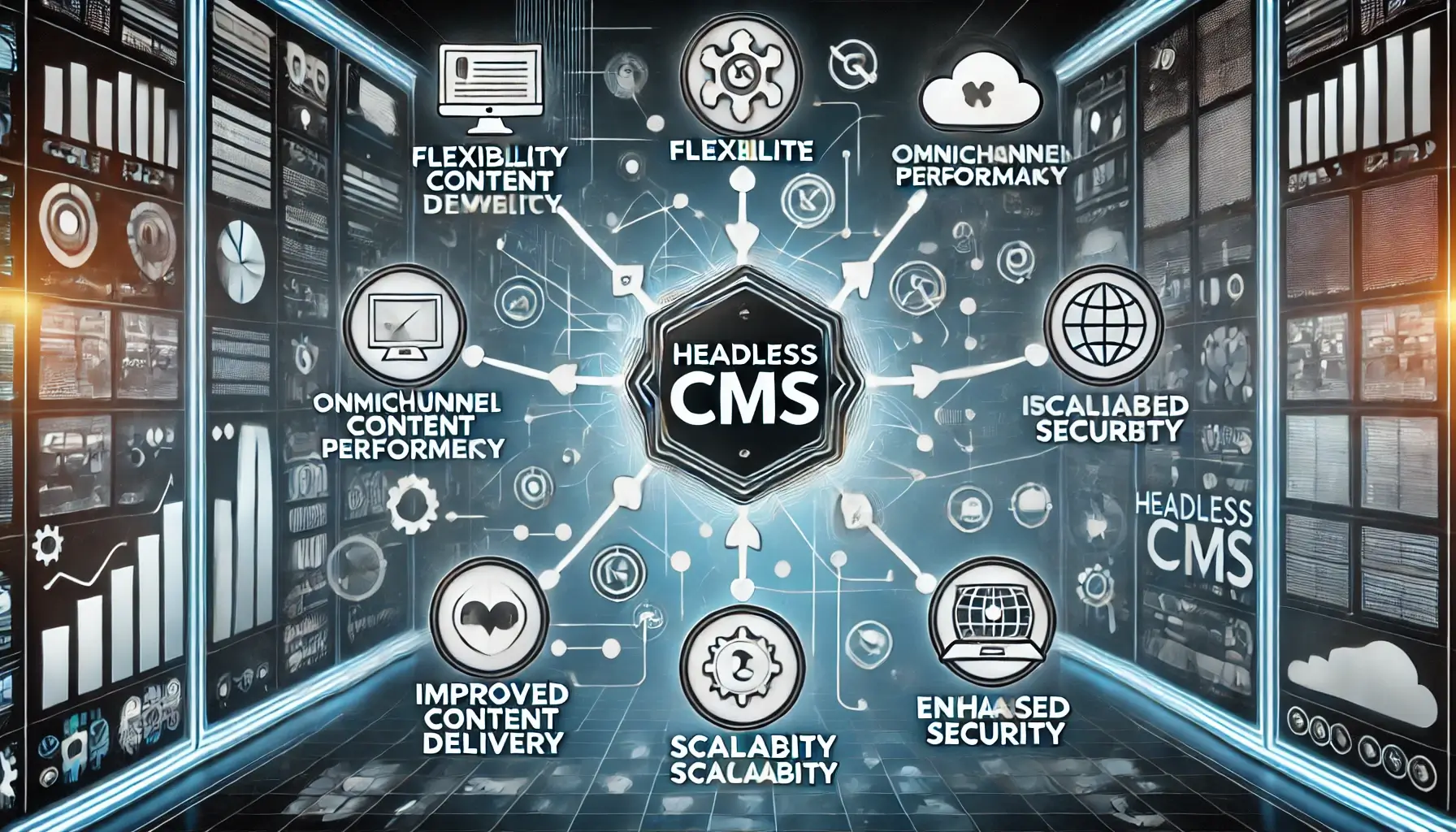
In the current landscape of content management, one often finds himself at a crossroads between a Headless CMS and a traditional CMS. You need to come to the difference between these two systems in order to be in a better position for making an informed decision that is best tailored to your business needs.
Traditional CMS systems refer to WordPress, Joomla, Drupal, and many others using which websites are being managed. They integrate content management (the back-end) with the presentation layer (the front-end) into a single, tightly-coupled architecture.
This means that the content you are creating is directly coupled or tied to how it will be displayed on the front end, typically through pre-defined templates. That’s perfectly fine for simple websites, but it can be a great limitation as businesses grow and look to deliver content across multiple channels: mobile applications, IoT devices, and social media platforms.
A Headless CMS, on the other hand, decouples the front end from the back end and gives organizations flexibility in delivering content through APIs to any device and platform. This decoupling enables developers to work with the front-end technology they prefer—be it React, Angular, or Vue.js—without the limitations of the CMS. In fact, it allows a business to create a highly tailored digital experience for every platform, ensuring a consistent, compelling user experience at every touchpoint.
What follows is one of the most compelling advantages of a Headless CMS: omnichannel content delivery. It is important that a business engages a Content Management Solution that can propagate content through these touchpoints with the enhanced customer’s interaction with brands over various platforms. A headless CMS is great at allowing businesses to manage their content centrally and deliver it through whatever channel—web, mobile apps, smart devices, you name it.
At DM WebSoft LLP, we have been working with several clients in their transition from conventional CMS platforms to headless CMS architectures, opening the doors to an entirely new degree of flexibility and performance. And we at DM WebSoft LLP have experienced specialists in implementing this kind of architecture, gaining the flexibility to not only meet your current needs but grow with your business. If you are concerned with enhancing website performance, improving security, and extending your digital reach with regard to all devices, then a Headless CMS is possibly the right approach.
The next section examines the specific advantages of utilizing a Headless CMS and how it drives growth and innovation within your business.
Key Benefits of Using a Headless CMS
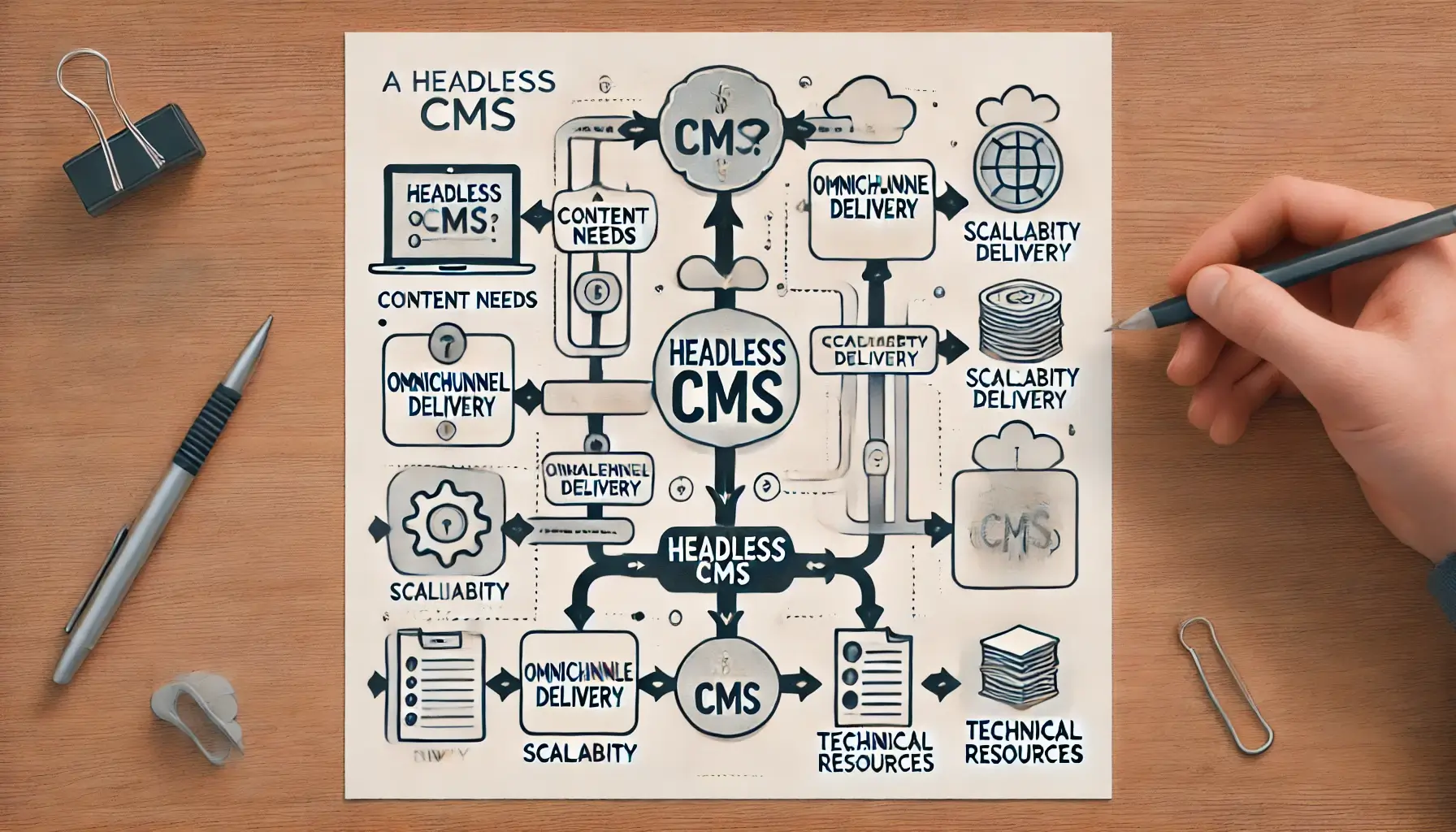
Adopting a headless CMS is a transformative decision for businesses in not only improving their digital presence but also in the way they manage content. A headless CMS can provide more benefits than a traditional content management system, which has been established to have no scalability and flexibility at all.
- Flexibility in Frontend Development: One of the main advantages of a Headless CMS is in frontend development. Developers can use any technology stack they might need, with flexibility, since the content management system is decoupled from the frontend. This supports any framework—React, Angular, or Vue.js—for highly customized and dynamic digital experiences. This flexibility also paves the way to updating or redesigning the front-end without disturbing the back-end content management, giving businesses the agility they need to immediately address shifts in market demand.
- Omnichannel Content Delivery: In the age of digital media, delivering content in multitudinous channels has transitioned from being an option to a mandate. And how about omnichannel content delivery in a Headless CMS? The ability of the system for content delivery to all platforms, from websites to mobile apps and even IoT devices and digital signage systems, enables a great opportunity for an organization to take control of its content across channels: an enhancement in the customer experience by assuring consistency of the messaging and branding.
- Better Performance and Speed: Headless CMS improves content delivery so much that it makes the performance better; in addition, this includes quick loading time. This is because the front-end is detached from the back-end, so optimization for speed can be undertaken without being weighed down by unnecessary code or features that are oftentimes a part of traditional CMS platforms. This can be responsible for a better user experience, higher engagement rates, and improved search engine rankings—an important factor to drive organic traffic to your website.
- Scalability for Growing Businesses: Growing businesses require solutions that grow along with them, and content management is no different. With this nature, a headless CMS ensures you can handle more demanding content and deliver it more effectively across all of your channels. Whether adding new products, launching into new markets, or expanding your digital presence, a Headless CMS can grow with your business by making sure that your content management system is never the bottleneck.
- Stronger Security and Compliance: Security is key when running a business in the digital space. Another added layer of security comes with a headless CMS, as it decouples the content management system from the delivery layer. It eliminates the potential vulnerability risks associated with components that are tightly coupled. Decoupled architecture also paves the way for improved adherence to regulation and industry standards since it allows these security measures and updates to be done without a change in the front end.
At DM WebSoft LLP, we understand the immense value a Headless CMS offers to any business. Our vast experience in implementing a Headless CMS successfully goes a long way toward supporting our clients in extracting as much value as possible from such systems for optimum results. Take advantage of a Headless CMS with us and give your digital strategy a whole new push.
Is a Headless CMS Right for Your Business?
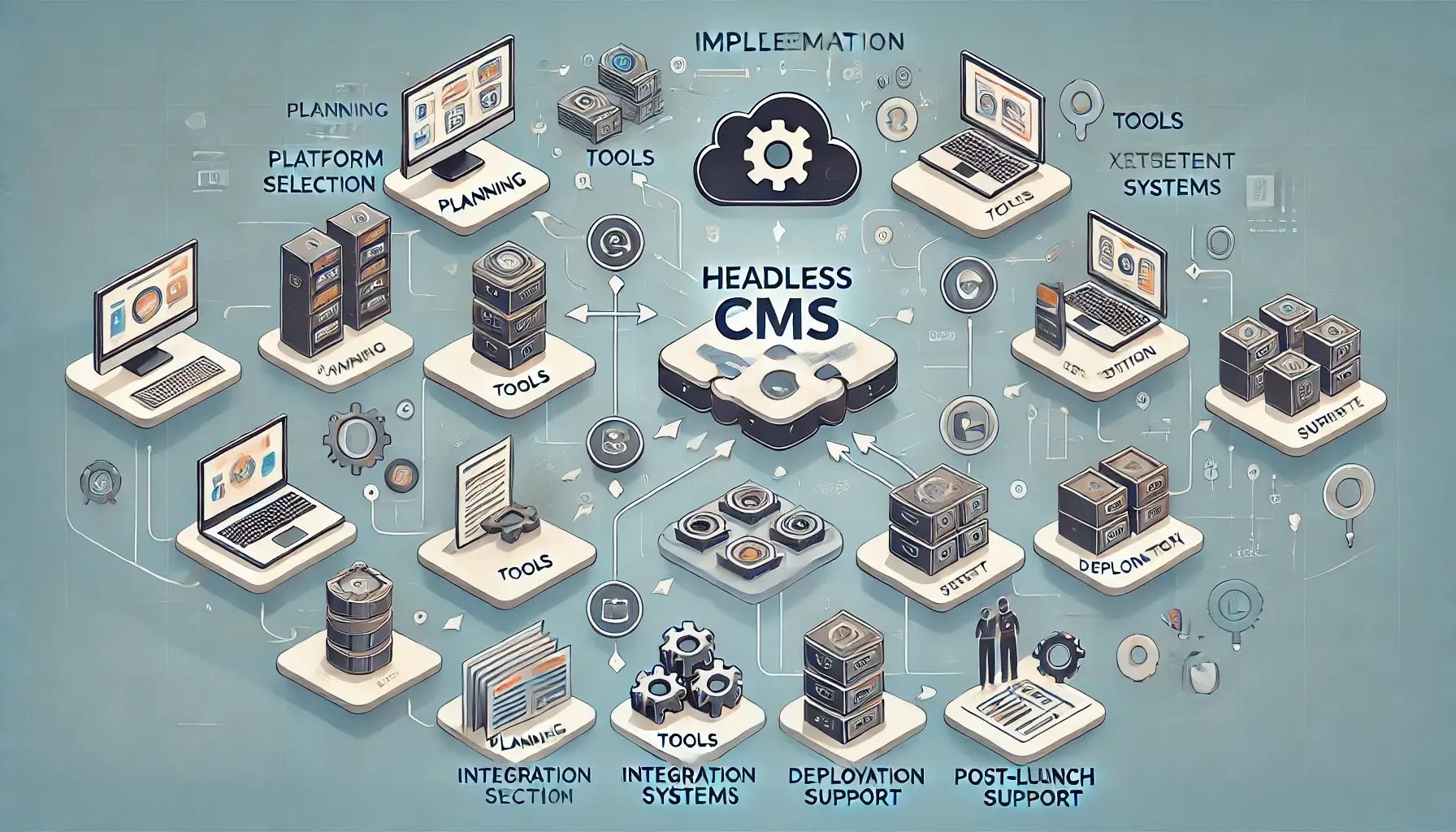
Deciding whether a Headless CMS is the right choice for your business can be a complex process. The benefits are clear, but a move in that direction depends first on your particular needs, goals, and resources. Here’s our leading advice on some key considerations to help you evaluate if a Headless CMS will fit into your business strategy.
Assess Your Content Needs
The starting point of assessing a Headless CMS is to try to define the current and future needs for content consumption. Are you managing a single website, or do you need to deliver content across multiple platforms like mobile apps, IoT devices, and social media channels?
A Headless CMS could be well-suited for your business if content is to be delivered through an omnichannel—such that a continuous and consistent message from one channel or touchpoint is realized on another. With central management for content, it can be distributed out through APIs, thus holding parity in messaging wherever your audience interacts with your brand.
Consider Scalability and Growth
Another critical factor is the scalability of your current content management system. As business grows, the complexity increases in managing and delivering content. A Headless CMS would give you the scalability that is required in case of remarkable growth in the number of products, services, or markets you would like to serve. So, its decoupled architecture lets you scale the front end independently of the back end, making sure that you manage increasing content demands easily without a pain in performance.
Technical Resources and Expertise Required
Headless CMS implementation requires a higher level of technical expertise than traditional CMS. If your development team is sufficiently well-versed in modern front-end technologies and APIs, they should be able to thrive in a Headless CMS environment.
Otherwise, you may need to consider training or even partnering with providers such as DM WebSoft LLP. Our experts have decades of relevant, hands-on experience in implementing, supporting, and delivering services for Headless CMS to enterprises, which help them pass through all the technical complexities and make this transition smooth and successful.
Determine Cost and ROI
While a Headless CMS comes with several value additions, one should be realistic when comparing this against the costs. The initial setup and integration may indeed cost more than with a traditional CMS, especially if one is starting from scratch or intends to integrate with another system.
However, the long-term return on investment can be very substantial because of performance improvements in scalability and the potential to deliver personalized, omnichannel experiences. A deep cost-benefit analysis should help you balance upfront investment against potential returns.
Industry-Based Considerations
Businesses in industries such as eCommerce, media, and technology perform well with a Headless CMS because they need rapid content updates, personalized user experiences, and delivery across many platforms. If your business is among the ones mentioned, then the flexibility and efficiency a Headless CMS offers could give you a competitive advantage within your industry.
At DM WebSoft LLP, we work with organizations to evaluate whether a Headless CMS would be the most appropriate choice under consideration when thinking about content management. We can assist you in defining your objectives and resources in a better way, as well as requirements set by your industry, so that you can decide carefully in a way that supports your long-term strategy.
The next part is a deep dive into all the implementation strategies of a Headless CMS. Read on and get actionable insights to ensure a successful transition.
Headless CMS Implementation Strategies
Before a Headless CMS is implemented, a clear plan and strategy for the process should be in place. This section will take you through some of the crucial steps to ensure that your transition is smooth from the point of getting started with planning to post-launch support.
Planning Your Headless CMS Implementation: The beginning of any successful implementation starts with thorough planning. Start by defining your business goals and content needs.
What are you trying to accomplish with a Headless CMS?
Whether it’s to improve content delivery speed, enhance the user experience, or enable omnichannel content delivery, having clarity on your objectives is what will guide you in your decision-making process from start to implementation.
Then, assess your existing content infrastructure: identify your existing systems, tools, and processes, and how they fit together with a Headless CMS. This will enable you to identify potential challenges and areas that might need more resources or expertise.
Choosing the Best Headless CMS Platform
With a variety of Headless CMS platforms, proper selection is crucial for the business. Flexibility, ease of use, scalability, and how much support can be drawn off the platform are some of the key factors here. Some of the popular inclusions are Contentful, Strapi, and Sanity—each with different features and benefits.
At DM WebSoft LLP, we enable such businesses to choose the right platform through our specific needs assessments, making the best recommendation. Our team will assist you in your choice, from a platform that is easy to fit into the technology stack you have to one with advanced customizing opportunities.
Systems Integration with Legacy Systems
The whole process becomes very complex when integrating a Headless CMS into legacy systems or when working with several platforms. For that matter, it is imperative to develop a clear plan regarding how the Headless CMS will interface with CRM systems, e-commerce platforms, and analytics tools to have them integrated seamlessly.
Middleware or API Gateways could be used to create an interface between the Headless CMS and other systems. This will help in better flow of data and lesser chances of integration problems. Also, make sure that your development team has skills in the tools and technologies, which are needed to make integrations happen.
Deployment and Testing
Now, your Headless CMS system is fully integrated, and you can move on to deployment. Start with a pilot project or a phased roll-out to check the functioning and identify any possible issues in the system. Testing includes load testing, security assessments, and user acceptance so that this Headless CMS really delivers what the business needs.
It is also very important to involve key stakeholders, content creators, developers, and IT teams in the loop, which will facilitate obtaining feedback for making necessary adjustments. That collaborative approach will help ensure the system is fully optimized before full deployment.
Post-Launch Support and Optimization
When the Headless CMS is live, support and optimization should be ongoing components for success. Monitor the system’s performance, gather user feedback, and keep iterating on it to make sure the CMS continues meeting your needs.
Regularly review your content strategy and adjust it to be relevant to changing market demands and technological advancements. At DM WebSoft LLP, we provide all the support services one will need post-launch to get their Headless CMS to optimum working capacity and keep benefiting from it.
Read on for some live business cases that have integrated a Headless CMS. Each story holds critical insights and learnings.
Headless CMS Adoption Client Success Story: The Real World
Let’s take a look at real-world cases where businesses have applied this technology and how Headless CMS has transformed their digital presence. The following case studies will show you how diverse industries have adopted and benefited from Headless CMS to realize their goals for digital transformation.
Client success story 1: Leading Ecommerce Retailer
A leading ecommerce retailer grappled with their legacy CMS that was buckling under the demands of a growing product catalog and an innovative omnichannel strategy. The company was in need of a solution that would work across its businesses, fast content updates for across-the-board improvement in website performance—wherein through several platforms, including but not limited to website, mobile app, and in-store displays, content can be updated quickly and effectively—while scaling alongside the growth of its business.
The retailer decoupled their content management from the frontend and user experience when they moved to Headless CMS, optimizing them for each platform independently. This resulted in more personalized shopping with faster load times of its pages and a quicker rollout of new content and promotions across all channels. This solution increased not only customer satisfaction but also sales and customer retention.
Client success story 2: Global Media Company
A global media company with a large amount of content needed a more effective way of managing its material and distributing it over various channels—websites, mobile apps, and streaming platforms. Their old CMS was too cumbersome and not flexible enough to present content fast and in a uniform way on every platform.
A Headless CMS was brought into the company to centralize content management and easily distribute content to multiple front-end applications through APIs. This simplification allowed for the facilitation of content updates, reduced time to market for new content, and maintained the brand for all channels. As such, it was able to enhance user engagement and offer an improved ability to deliver content to users in real time, addressing the fast-moving speed of the media industry.
Client success stories 3: An Innovative Tech Startup
An innovative tech startup that deals with IoT devices needed a content management solution that met its specific needs, such as delivering content to various smart devices in real time. Their traditional CMS was not up to the task, as it was not designed to deal with the complexities of IoT content delivery.
Having a Headless CMS simply allowed the startup to decouple their content management from the delivery layer and, thus, push updates of the content quickly and efficiently down to its IoT devices. Moreover, its Headless CMS allowed them to integrate it with other systems, like analytics and user management platforms, into one comprehensive solution fostering their growth. This further resulted in reducing the time to deploy content, increased user satisfaction, and better opportunity for innovation at every turn in any changing marketplace.
With such case studies, what really comes out is the versatility and power of a Headless CMS in different industry applications. Whether it is eCommerce, media, or technology, a Headless CMS gives the flexibility and scalability necessary to be in the lead for today’s digital landscape.
DM WebSoft LLP is well experienced in supporting businesses on an ensured successful implementation of Headless CMS. We have a solution-oriented methodology to ensure your business is set up to gain from any Headless CMS, regardless of your industry or specific needs.
Following are the market trends and research in the Headless CMS space, which delve into future insights on content management.
Market Trends and Headless CMS Research
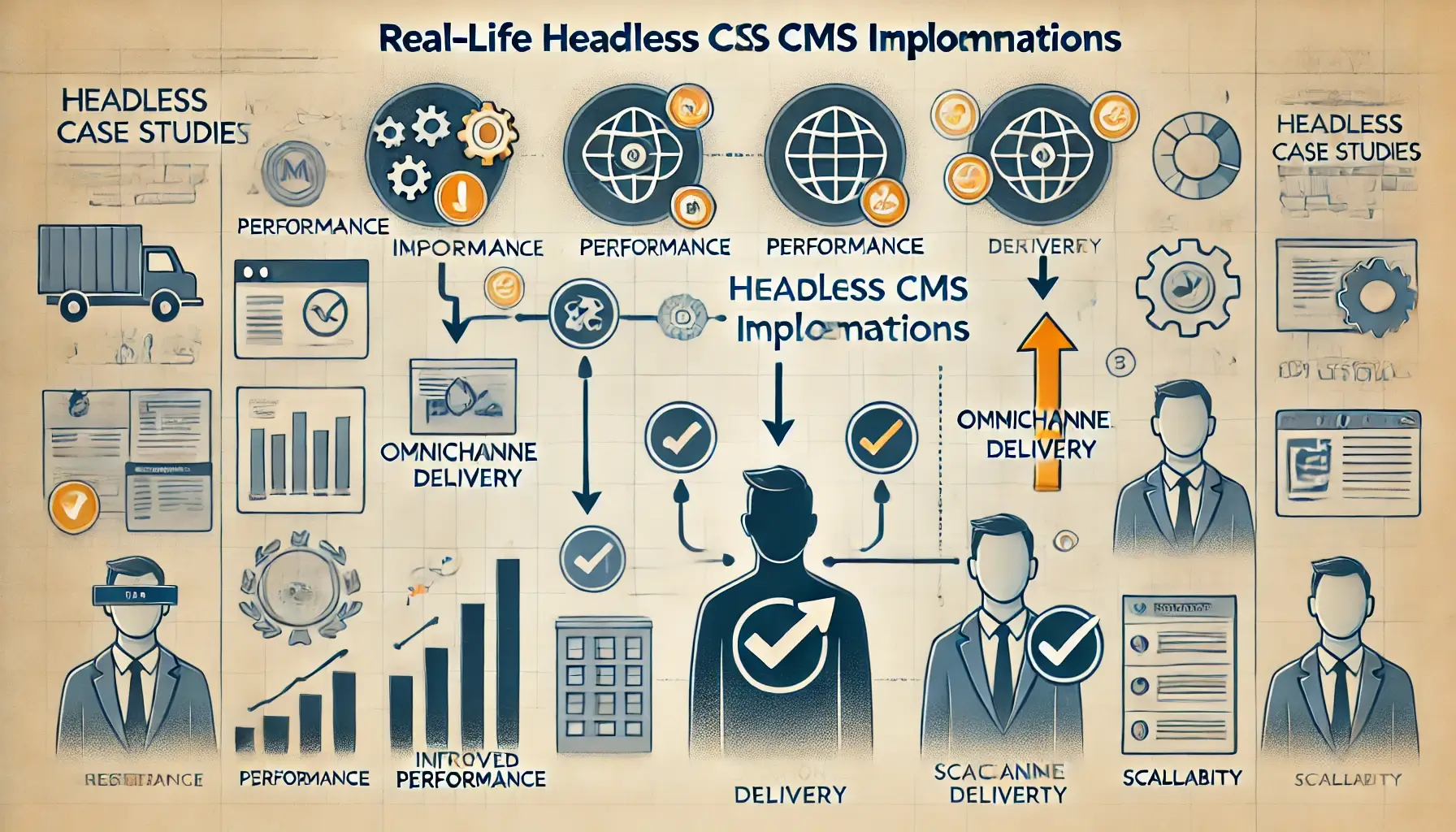
This shift to Headless CMS is not a passing trend but fundamental to how businesses manage and deliver content in a digital world. Businesses across all industries are recognizing the limitations of traditional CMS platforms, hence the rapid adoption of Headless CMS in response to some important market trends and research insights.
Headless CMS Adoption
Research says there will be a steep surge in Headless CMS platforms adopted over the next couple of years around the world. The growth is really propelled by increasing demand for omnichannel content delivery, businesses looking for delivered personalized experiences across different touchpoints.
As consumers interact with brands across numerous touchpoints, including websites, mobile apps, social media, IoT, businesses are leaning on a Headless CMS to be more effective content managers and give cohesive user experiences.
Increase in Omnichannel Strategies
One of the reasons that are pushing businesses forward with Headless CMS is an increase in adopting omnichannel strategies. Most of the traditional CMSes do not support content delivery across most of the channels, and therefore, the user experience remains largely fragmented.
Rather, a Headless CMS helps organizations manage their content centrally and deploy it anywhere—be it on the web, mobile, or even in the emerging realms of AR, VR, and IoT. This is a very vital thing with the fast disappearance of online-offline boundaries.
Scalability and Flexibility Demand
While businesses continue to scale, the need for content increases, and the downsides of traditional CMS platforms begin to get quite visible. With a decoupled architecture, you enjoy full scalability and flexibility to manage growing content volumes efficiently and ensure it delivers across all platforms. This scalability is of the utmost importance for businesses undergoing fast-paced growth and those in fluid industries that need to be agile to stay ahead.
Personalized User Experience
Today’s consumers are very particular about having a personalized experience with a brand based on their preferences and behavior. A Headless CMS makes that possible, as it facilitates content creation and management at a personal level, to be delivered to the right user at the right time.
All of this does not only enhance the user experience but also elevates the level of engagement and conversion; in fact, that is why personalization becomes the most critical thing that convinces more and more users to opt for a Headless CMS.
Advanced Integration with Innovative Technologies
As new technologies, such as artificial intelligence (AI), machine learning, and the Internet of Things are advancing, businesses look for content managing tools that can integrate with them. A Headless CMS really does a great job in allowing the infusion of these technologies right into content strategies, giving business space for those data-driven insights, content delivery automation, and building highly sophisticated digital experiences.
At DM WebSoft LLP, we are staying on top of such trends by continuous research and tuning our Headless CMS solutions to cater to our world’s evolving needs. The present team is committed to helping businesses find the potential of Headless CMS in sparking innovation and content delivery enhancement to meet the market’s ever-changing dynamics.
That means opting for a Headless CMS is not a whim but foresightingly charged with far-reaching consequences. With this, businesses will lean on Headless CMS more and more as part of digital strategies for flexibility in managing content.
A Preview of Headless CMS: What to Expect
As developments and adaptability to changes in the digital ecosystem continue, we will observe the growth of Headless CMS with more innovative content management capabilities. Understanding future trends will position your business to maximize the benefits derived from a Headless CMS.
- More AI and Machine Learning Integration: As AI and machine learning technologies mature, they are finding their way into content management systems to automate and enhance content creation, personalization, and delivery. We are just a step away from Headless CMSs likely having features powered by AI tools. These tools are measuring user interaction, helping to predict content needs, and dynamically forming experiences through all touchpoints. In other words, it means that businesses will be producing content geared toward dynamic experiences that have the power to increase engagement and conversions.
- General Expansion in Omnichannel Capabilities: The demand for omnichannel experiences is growing, driving Headless CMS to support even more channels—and now, even the emerging technologies of AR/VR and IoT. This will give businesses the ability to deliver content not only to websites and mobile applications but also to a number of digital touchpoints, driving user experiences that are both immersive and interactive.
- Better Security and Privacy Features: With mounting concerns over data privacy and cyber threats, security features will be top of mind in the development priorities of Headless CMS platforms. A focus on new functionalities in security—advanced encryption, stronger access controls, and better compliance tools to help companies keep current with changes in regulatory requirements—will mark future releases of these systems. Companies will make security their prime focus as they handle more sensitive customer data across platforms.
- Better Collaboration and Workflow Management: Collaboration is key to truly scaling a business. As businesses grow, the optimal core need includes handling workflow and inter-team collaboration. The next generation of Headless CMSs will likely come with enhanced collaboration functionalities that will allow smooth experiences across departments and, in some cases, even across different locations working as a single team. Tools will offer high-end version control, real-time editing, and top-notch project management systems, making it easier to manage complex content operations.
- Emphasis on User Experience Design: With Headless CMSs, flexibility puts businesses in a better position to push the bar even higher in terms of intuitiveness, engagement, and aesthetic appeal in the digital experience. In the future, such solutions will likely be packed with even more tools and frameworks supporting advanced UX design, empowering businesses to keep innovating with new front-end technologies and design patterns. This will allow brands to stand out definitively in a crowded digital marketplace.
Conclusion: Adopt Headless CMS for Your Corporate Site
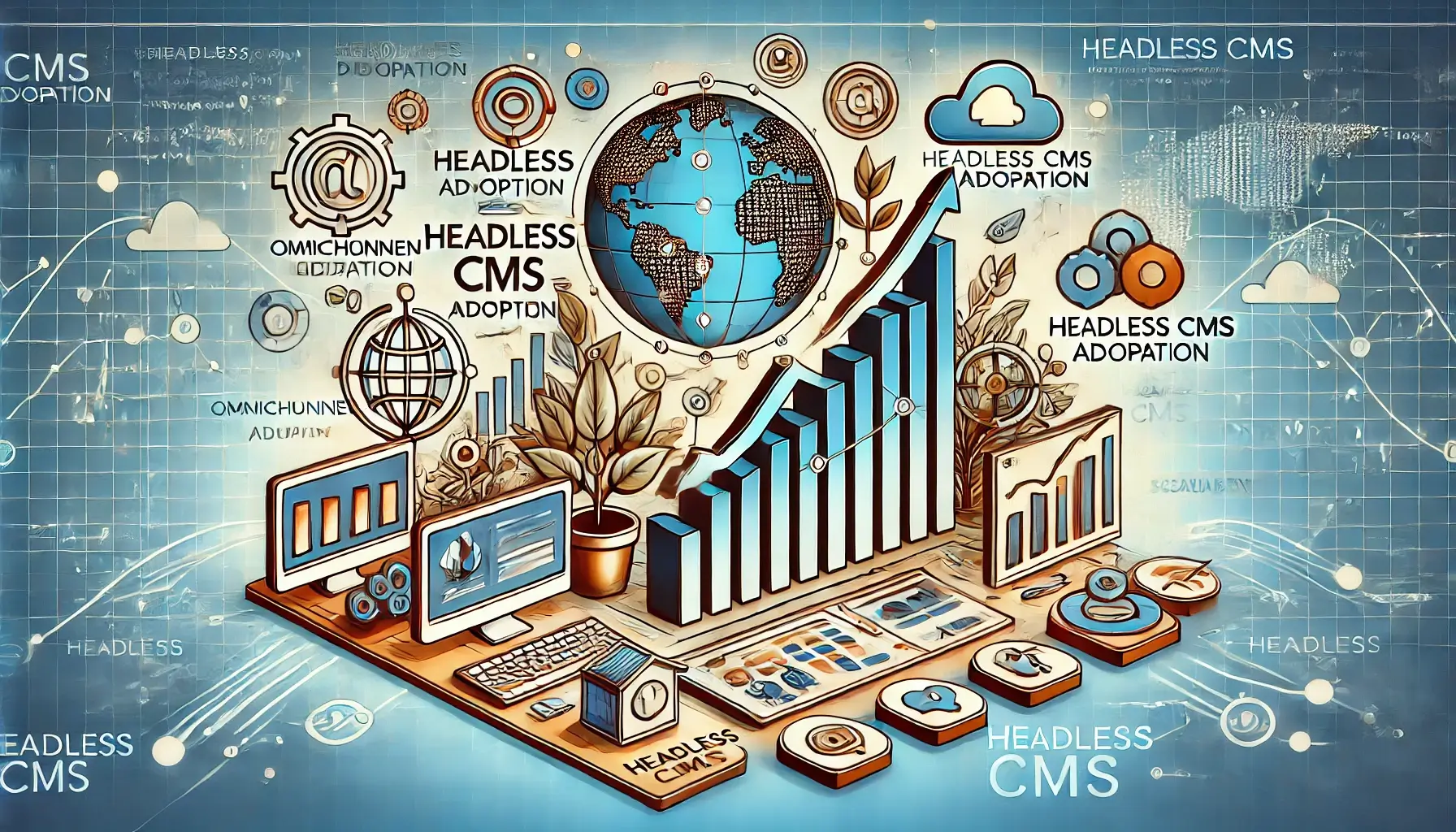
With such a fast-paced digital environment, organizations have to be faster, more responsive, and innovative in ways they have never been before if they are going to survive the competition. This is where Headless CMS offers tremendous flexibility, scalability, and performance that traditional CMS platforms may lack. Having a Headless CMS allows businesses to easily distribute content across multiple channels: websites, mobile applications, IoT devices, or emerging platforms.
In the last several posts, we’ve talked about the key differences between a Headless CMS and a Traditional CMS, the key value-add in implementing a Headless CMS, and we’ve done this by providing live case studies on exactly how it’s changing the game across multiple industries. Then, of course, we discussed key strategies for implementation and looked at current market trends showing why Headless CMS is so important in the content management landscape.
At DM WebSoft LLP, we understand that going Headless is an important decision needing experience and expertise.
Conclusion: Add Headless CMS to Your Business Website
Headless CMS offers vast flexibility, scalability, and performance levels far beyond those of any conventional CMS systems. In a digital world where the pace continues to increase, organizations need to speed up their reactivity and innovation to respond with competitiveness.
A Headless CMS enables content to be distributed easily through different channels: websites, mobile applications, IoT devices, or even emerging platforms.
In the last several posts, we’ve talked about the key differences between a Headless CMS and a Traditional CMS, the key value-add in implementing a Headless CMS, and we’ve done this by providing live case studies on exactly how it’s changing the game across multiple industries. Then, of course, we discussed key strategies for implementation and looked at current market trends showing why Headless CMS is so important in the content management landscape.
At DM WebSoft LLP, we understand that going Headless is an important decision needing experience and expertise. Our team specializes in helping businesses navigate the transition: understanding your needs, selecting the right platform, implementing, and optimizing the Headless CMS for future growth. Whether it’s creating personalized omnichannel content that is dynamic, boosting performance, or scaling your content operations, we bring the experience and expertise to the table for every step of the way.
Embracing a Headless CMS isn’t about adopting a new technology; rather, it’s the key to future-proofing your content management strategy and setting your business on a growth trajectory in a progressively digital world. Partner with DM WebSoft LLP for unlocking the full capabilities of a Headless CMS, breaking barriers, and opening new opportunities for innovation and engagement with customers.
If you’re ready to take your content management to the next level, then reach out to DM WebSoft LLP today. Allow us to help you leverage a Headless CMS and drive your business into the digital future.
A Headless CMS is a content management system that decouples the content repository from the front-end, allowing for flexible content delivery across multiple platforms via APIs.
A Headless CMS separates the content management and presentation layers, unlike traditional CMSs where both are tightly integrated.
Key benefits include flexibility in front-end development, omnichannel content delivery, scalability, improved performance, and enhanced security.
A Headless CMS is ideal for businesses needing flexible, scalable, and omnichannel content delivery, especially those undergoing digital transformation.
DM WebSoft LLP offers expert guidance in evaluating, implementing, and optimizing Headless CMS solutions tailored to your business needs.
Get Started Now !
What’s the Process ?
Request a Call
Consultation Meeting
Crafting a Tailored Proposal
Get Started Now !
Real Stories, Real Results. Discover What Our Clients Say

Working with DM WebSoft LLP was a game-changer for our business. Their technical prowess and innovative solutions transformed our online presence. A highly recommended web development agency with a stellar track record.

We are thrilled with the results DM WebSoft LLP delivered. Their deep understanding of web development coupled with years of expertise ensured a seamless and visually stunning website. True professionals!

In a digital age where first impressions matter, DM WebSoft LLP crafted a website that speaks volumes. The team’s attention to detail and commitment to quality set them apart. Thank you for making our vision a reality.

DM WebSoft LLP’s team demonstrated unparalleled expertise. Their ability to navigate complex technical challenges with ease is truly commendable. Choosing them for our web development needs was the best decision.

Exceptional service, unmatched skills! DM WebSoft LLP stands out as a leading web development agency. Their collaborative approach and commitment to excellence make them our go-to partner for all things web-related.

DM WebSoft LLP turned our ideas into a digital masterpiece. The seamless communication and timely delivery of our project showcased their professionalism. Highly impressed with the level of creativity and skill.

Our experience with DM WebSoft LLP was nothing short of amazing. From concept to execution, their team provided top-notch web development services. A reliable partner for businesses looking to elevate their online presence.

DM WebSoft LLP’s team of tech experts is second to none. Their wealth of experience reflects in the quality of their work. Our website not only meets but exceeds industry standards, thanks to their dedication.

Choosing DM WebSoft LLP was the best investment for our web development needs. Their team’s proficiency, coupled with a customer-centric approach, made the entire process smooth and enjoyable. A pleasure to work with!



